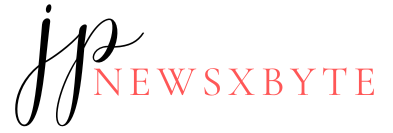Introduction
Preparing for coding interviews can be a daunting task, especially when you’re starting as a beginner. You might have learned complex data structures like segment trees, speed trees, and Bloom filters, only to realize that these aren’t always the focus of coding interviews. In this article, I’ll share insights gained from interviewing at top tech companies like Google, Meta (formerly Facebook), and Amazon. I’ll also provide guidance on the top 5 most commonly asked data structures and when to use them.
#5: Heap
A heap is a tree-based data structure used to store a partially sorted set of elements. There are two main types of heaps:
– Max Heap: In a Max Heap, every node is greater than or equal to both of its children. This means that the root node (topmost node) is always the maximum element in the heap.
– Min Heap: In a Min Heap, every node is smaller than or equal to both of its children. The root node is the minimum element.
Heaps are often implemented as arrays, where the elements are partially sorted according to the heap property.
When to use a heap:
– Use a heap when you need quick access to the maximum or minimum element in a collection.
– Heaps are ideal for implementing priority queues, where you want to efficiently extract the highest or lowest priority element.
– Algorithms like Heap Sort, Dijkstra’s algorithm (for finding shortest paths), and median maintenance in streaming data can benefit from heaps.
#4: Binary Tree
A binary tree is a tree data structure consisting of nodes, each of which has a value and links to its left and right children. The topmost node is called the root node, and nodes with no children are called leaf nodes. Binary trees are used in various applications, including:
– Database Indexing: Binary trees can be used for efficient indexing of data in databases.
– Sorting Algorithms: Algorithms like Heap Sort and Quick Sort utilize binary trees.
– Decision Trees: In machine learning and AI, binary trees are used for decision-making processes.
When to use a binary tree:
– You should consider using a binary tree when the coding interview problem explicitly involves working with a binary tree.
– Binary trees are well-suited for problems that can be solved using recursion. Many binary tree problems are solved using recursive algorithms.
– Understanding different binary tree traversal methods (pre-order, post-order, in-order, and level-order) is essential for solving tree-related problems.
#3: Hash Map (Hash Table)
A hash map (or hash table) is a data structure that provides fast access to data based on a key-value pair. It uses a hash function to map keys to unique indices in an array, where the associated values are stored. Hash maps are known for their efficient key-value lookups.
When to use a hash map:
– Hash maps are valuable when you need rapid key-value lookups or when organizing and searching for specific elements in your problem.
– Be mindful of space complexity when using hash maps, as they can consume additional memory.
#2: Stack and Queue
Stacks and queues are fundamental data structures with specific characteristics:
– Stack: Stacks follow the Last-In-First-Out (LIFO) principle, where the last element added is the first one to be removed. Common operations include push (add) and pop (remove).
– Queue: Queues adhere to the First-In-First-Out (FIFO) principle, where the first element added is the first to be removed. Operations include enqueue (add) and dequeue (remove).
When to use a stack or queue:
– Stacks are useful when you need to keep track of the most recently seen values, especially in nested scenarios.
– Queues are beneficial for maintaining order and processing elements in a specific sequence.
#1: Graph
Graphs are versatile data structures that consist of vertices connected by edges. Graphs are used to represent relationships or connections between entities in various domains.
When to use a graph:
– Consider using a graph when a problem involves modeling relationships, connections, or networks between entities.
– Understanding graph search algorithms like depth-first search (DFS), breadth-first search (BFS), and Dijkstra’s algorithm is essential when dealing with graph-related problems.
– Familiarity with concepts like topological sorting (for directed acyclic graphs) and detecting loops in graphs can be valuable for solving complex problems.
Conclusion
Mastering data structures is a crucial step in preparing for coding interviews. While understanding the core concepts of data structures is essential, it’s equally vital to know when and how to apply them to solve real-world problems efficiently. By focusing on the top 5 data structures mentioned in this article and understanding when to use them, you’ll be better equipped to excel in coding interviews and secure your dream job in the tech industry.


